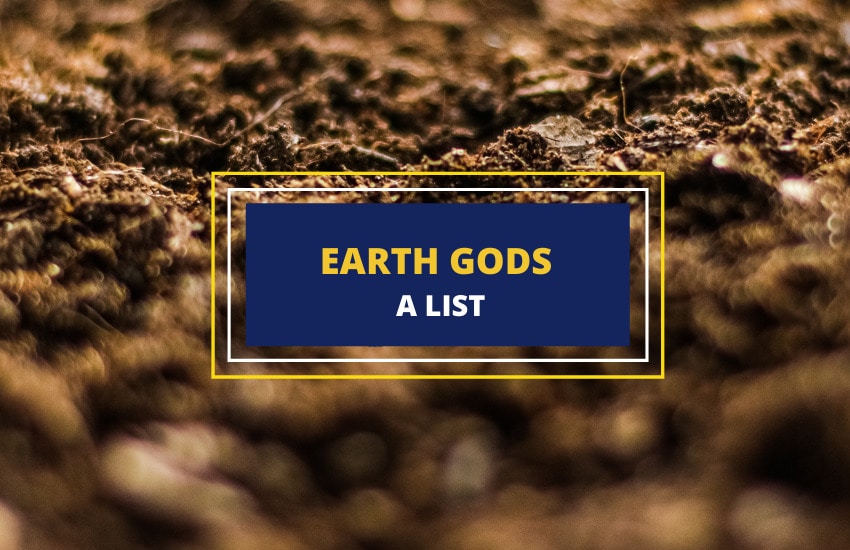
Table of Contents
Earth deities can be found in any religion and mythology around the world. It’d be a mistake to think that they are all similar, however, as they are as diverse as the lands they fare from. To exemplify this, we thought we’d take a look at the 15 most popular earth gods and goddesses from across ancient mythologies.
Some earth gods are as harsh and primordial as the deserts or tundras they come from. Others are luscious and green as that’s what the people who lived there knew of the earth. Some are fertility deities, while others are mother or father gods of their entire pantheons. In every case, however, the earth deity of any mythology and religion gives us insight into how the followers of the said religion viewed the world around them.
15 Most Famous Earth Gods and Goddesses
1. Bhumi
In Hinduism, Bhumi, Bhudevi, or Vasundhara is the goddess of the Earth. She is one of the three incarnations of the principle Hindu goddess Lakshmi and she’s also the consort of the boar god Varaha, one of the avatars of the god Vishnu.
As a Mother Earth, Bhumi is worshipped as a life-giver and a nourisher of all of humanity. She is often represented as sitting on four elephants, they themselves representing the four directions of the world.
2. Gaea
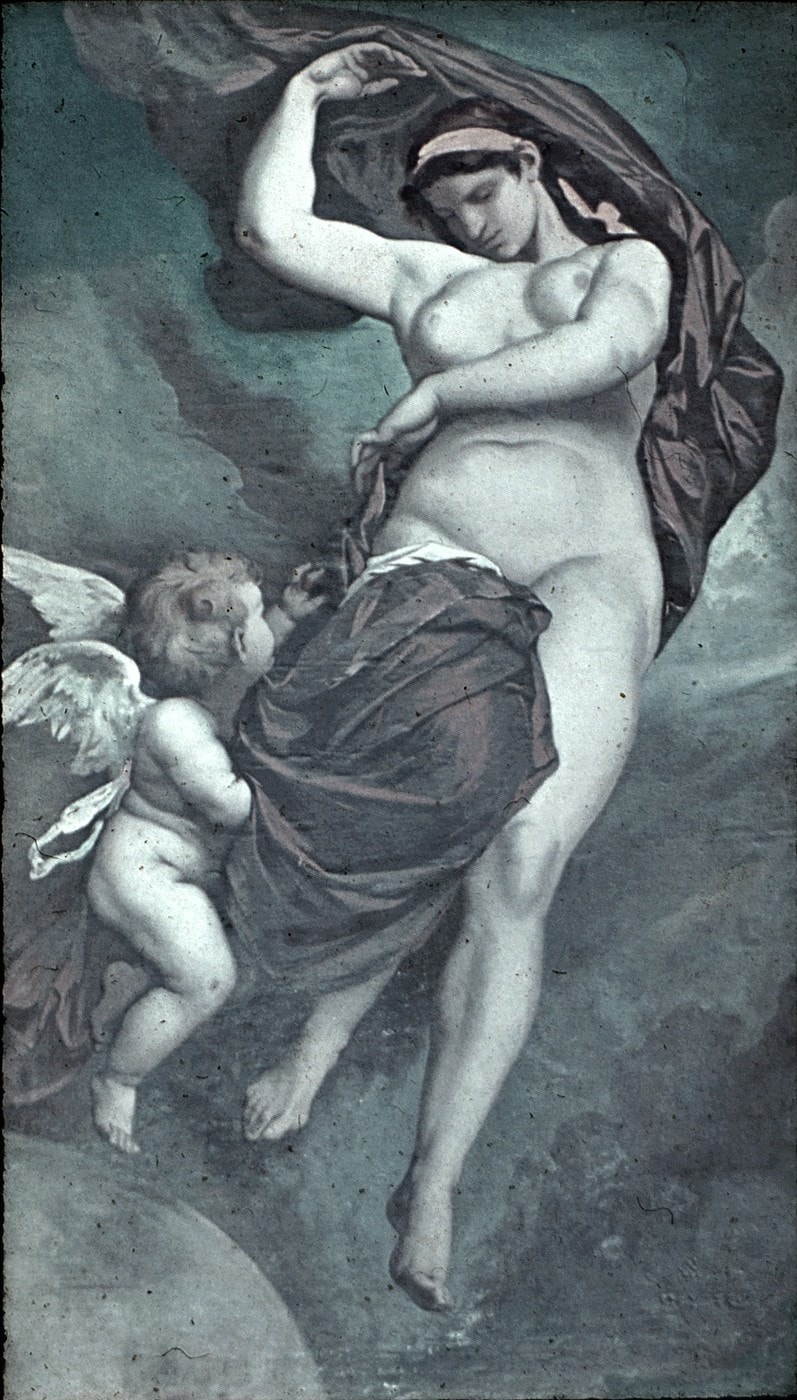
Gaea or Gaia is the grandmother of Zeus, mother of Cronus, and goddess of the earth in Greek mythology. For a long time before the rise of the Hellenes in Greece, Gaea was worshipped actively as a mother goddess. Once the Hellenes introduced the cult of Zeus, however, things changed for this Earth Mother.
With the cult of Zeus picking up steam, Gaea was relegated to a secondary role – that of an old deity that was replaced by the ”new gods”. Sometimes, she was portrayed as a good deity that loved her grandson and his pantheon of gods. At other times, however, she was portrayed as an enemy of Zeus for he had killed many of her children, the Titans, Gigantes, Cyclopes, and Erinyes, including his own father Cronus.
3. Cybele
Cybele or Kybele is the Great Mother of the Gods in the Phrygian pantheon – an ancient kingdom in today’s Turkey. The Hellenic Greeks identified Cybele with one of their own deities, the Titaness Rhea, sister and consort to Cronus and mother of Zeus.
Cybele, like Rhea, was the mother of all the gods in the Phrygian pantheon. She was associated with the wild nature beyond the walls of the Phrygian cities and she was often portrayed as a beautiful woman, accompanied by a lion. Nevertheless, she was viewed as a protector in times of war as well as a fertility deity and a healer.
4. Jörð
Technically speaking, Jörð is and isn’t a goddess. Older Norse myths describe her as a jötunn or a primordial giant and enemy of the gods. However, later myths say she is a sister of the Allfather god Odin who, himself is half jötunn and half Aesir god. Additionally, she also becomes one of Odin’s many extra-marital love interests and gives birth to the god of thunder Thor.
First and foremost, however, she is a goddess of the earth. Her name literally translates as “land” or “earth” and she is worshipped not just as a patron of the earth but as a part of the earth itself. As such, she is likely a daughter of the original proto jötunn Ymir from whose flesh the earth was created.
5. Sif
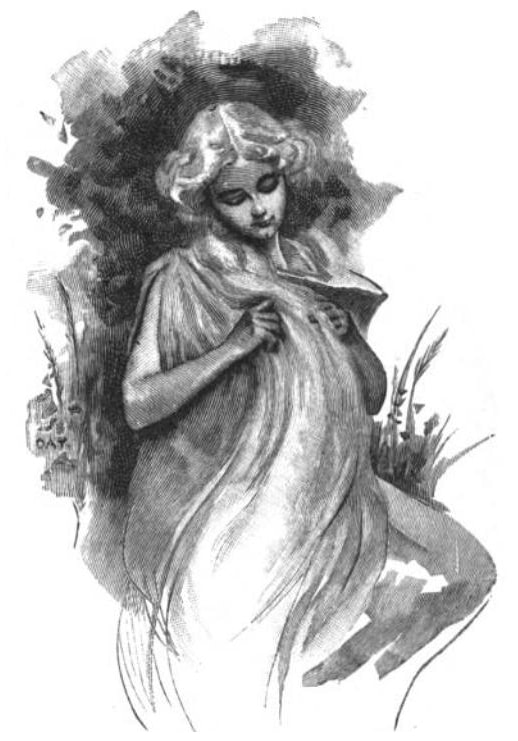
A much more clear-cut Norse goddess of the earth, the golden-haired Lady Sif is the wife of Thor and an earth and fertility deity. Unlike Jörð, who is viewed as a part of the solid ground beneath us, Sif is more commonly worshipped as a goddess of the earth as in the soil farmers have to work with.
In fact, Sif and Thor together are often worshipped as a “fertility couple” – one is the earth that gives birth to new life and the other is the rain that fertilizes the earth. Newlywed couples are often given symbols related to both Sif and Thor too.
6. Terra
Terra is the Roman equivalent of the Greek goddess and mother of the titans Gaea. She is often also called Tellus or Terra Mater i.e. “Earth Mother”. She didn’t have a particularly strong following or a dedicated priest, however, she had a temple on the Esquiline Hill of Rome.
She was actively worshipped as a fertility goddess whom people prayed to for good crops. She was also honored at the Semetivae and Fordicidia festivals for good crops and fertility.
7. Geb
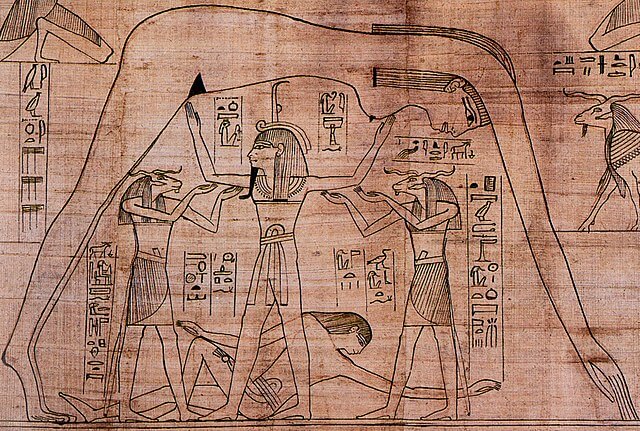
Geb was the grandson of the sun god Ra in Egyptian mythology and the god of the Earth. He was also a son of Tefnut and Shu – the gods of moisture and air. The ancient Egyptians referred to the Earth as “The House of Geb” and they also worshipped the sky goddess Nut as Geb’s sister.
This is an interesting departure from many other mythologies where the earth deity is usually female and its counterpart is a male sky god. Yet, what is similar to other religions is the fact that the earth and sky deities were not just siblings but also lovers.
According to the ancient Egyptians, Geb and Nut were so close that their father Shu – the god of air – had to constantly try to keep them separated.
8. Papatuanaku
Papatuanaku is the Maori Mother Earth goddess as well as the creator of all living things, including the Maori people. According to legends Papatuanaku had lots of children together with the sky god Ranginui.
The two deities were so close that their children had to push them apart to let light into the world. The Maori also believed that the land itself and the islands they lived on were the literal placentae of the Earth Mother Papatuanaku.
9. Mlande
Mlande was the Mother Earth goddess of the Mari people – the Volga Finnic ethnic group related to the Finish people that live in the Mari El republic in Russia. Mlande is also often called Mlande-Ava, i.e. Mlande Mother as the Mari people worshipped her as a traditional fertility and motherly figure.
10. Veles
Veles is the earth god of most Slavic mythologies and he’s anything but kind, nourishing, and giving. Instead, he is often portrayed as a shapeshifting snake who tries to climb on the oak tree of the Slavic god of thunder Perun.
When he succeeds on his quest, he’d often kidnap Perun’s wife and children to bring them down to his own realm in the underworld.
11. Hou Tu Niang Niang
Colloquially known as just Houtu, this Chinese deity is the Queen Goddess of the Earth. Coming from the time before the patriarchal Heavenly Court period of the traditional Chinese religion, Houtu was a goddess back in the ancient matriarchal days of the country.
Even in the male-dominated period of Chinese religion and culture, however, Houtu still remained widely venerated. As old as the creator god Pangu, she is also known as Empress Houtu. She was the matriarch of the gods before the Jade Emperor took over the Heavenly Court and she was in charge of all the lands, the flow of the rivers, and the lives of all creatures that walked the earth.
12. Zeme
Zeme is another Slavic goddess of the Earth. Worshipped mostly in the Baltic region of Europe, her name literally translates as “Earth” or “ground”. Unlike Veles, Zemes is a benevolent goddess of fertility and life.
She’s also often given additional names such as Ogu māte (Berry mother), Meža māte (Forest mother), Lauku māte (Field mother), Krūmu māte (Bush mother), and Sēņu māte (Mushroom mother).
13. Nerthus
This lesser-known Germanic goddess is actually the Earth Mother in Nordic mythology. She was believed to ride a chariot pulled by cows and her main temple was on an island in the Baltic sea.
The Germanic people believed that as long as Nerthus was with them, they would enjoy times of peace and plenty with no war or strife. Ironically, when Nerthus returned to her temple, her chariot and cows were washed in Nerthus’ sacred lake by slaves who then had to be drowned in those same waters.
14. Kishar
In Mesopotamian mythology, Kishar is the Earth goddess and both wife and sister to the sky god Anshar. Together, the two children of the monstrous Tiamat and water god Apsu themselves became parents of Anu – the supreme heavenly god of the Mesopotamian mythology.
As a mother goddess and an Earth goddess of the very fertile (at the time) Mesopotamian region, Kishar was also a goddess of all the vegetation and riches that came out of the ground.
15. Coatlicue
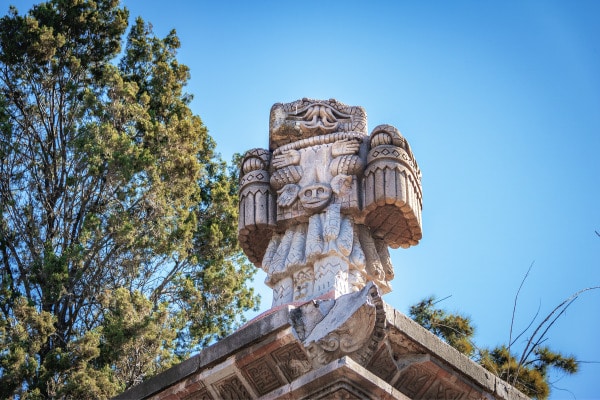
Coatlicue is the Earth Mother of the Aztec pantheon. Unlike most other Earth deities, however, Coatlicue didn’t just give birth to animals and vegetation, she gave birth to the moon, the sun, and even the stars.
In fact, when the moon and the stars learned that Coatlicue was pregnant once again, this time immaculately and with the sun, her other siblings tried to outright kill their own mother for the “dishonor” she was placing on them by having another child.
Fortunately, when he sensed that his mother was being attacked, the sun god Huitzilopochtli birthed himself prematurely out of his mother’s womb and, clad in full armor, he jumped to her defense. So, to this day, Huitzilopochtli circles around the Earth to protect her from the sun and the stars. And, as a final twist, the Aztecs believed that they had to dedicate as many human sacrifices to Huitzilopochtli as possible so that he could continue to protect the Earth Mother and all those who live on her.
In Conclusion
Earth gods and goddesses of ancient mythologies were reflective of their context and how the people thought of their world. Many of the mythologies of these gods are quite intuitive, although some have quite fascinating twists and turns to their stories. Through those, earth deities often manage to set a very diverse and nuanced basis for the rest of their mythologies.








